Psoriasis is a chronic, non-communicable, systemic inflammatory disease in which there is an abnormality in the growth of epidermal cells. It is characterized by specific skin changes resulting from excessive keratinization of the epidermis.
This particular skin disease can appear at any age; sometimes lesions are observed as early as infancy, but psoriasis in children usually has much milder symptoms and course. Psoriasis impacts about 2% of the population in Europe and the United States.
There are different varieties of psoriasis. Psoriasis is a kind of autoimmune disease. It's marked by inflammation that's widespread. What are the main signs of psoriasis? Unique skin marks caused by messed up skin cell regrowth. Psoriasis can affect various parts of the body based on its seriousness. In harsh instances, it can impact nail plates, too. People with psoriasis have a higher chance of getting other inflammation-related problems than others.
The causes of the condition are not thoroughly investigated and fully understood. Proper skin care for people with psoriasis is essential when treating the lesions. Untreated psoriasis can lead to psoriatic erythroderma, in which skin lesions can even cover the entire skin surface.

Psoriasis is a chronic, recurrent disease. Various factors play a role in its development, but scientists have yet to discover the exact cause. The following factors play an essential role in the growth of psoriasis:
Immunological factors, including the malfunction of its components, play a crucial role in developing the psoriasis disease. These include T lymphocytes![]() , which, along with B lymphocytes, are among the most important immune system cells. Their task is to defend the body against harmful agents from both the external and internal environment. In addition to this, the abnormal work of cytokines also draws attention. Cytokines have a regulatory function in the immune system.
, which, along with B lymphocytes, are among the most important immune system cells. Their task is to defend the body against harmful agents from both the external and internal environment. In addition to this, the abnormal work of cytokines also draws attention. Cytokines have a regulatory function in the immune system.
Psoriasis is a hereditary disease, and its inheritance is polygenic![]() . This means a child's risk of developing the condition increases when both parents have psoriasis. Sometimes, there is a one-generation skip, which means that the first generation is bypassed, and the symptoms of psoriasis develop in the next generation. As fresh mutations can occur, psoriasis can also appear in people without a loaded family history. Type I psoriasis, which manifests between 20-40, is inherited autosomal dominantly.
. This means a child's risk of developing the condition increases when both parents have psoriasis. Sometimes, there is a one-generation skip, which means that the first generation is bypassed, and the symptoms of psoriasis develop in the next generation. As fresh mutations can occur, psoriasis can also appear in people without a loaded family history. Type I psoriasis, which manifests between 20-40, is inherited autosomal dominantly.

Environmental factors can also contribute to psoriasis. This group includes infections such as upper respiratory diseases and parasitic infections. In addition, the development of psoriasis can be influenced by stress, drinking alcohol, smoking and taking certain medications, pregnancy and childbirth, and menopause.
Infections – The disease can also occur after acute infections, with inflammation and chronic diseases. Such diseases include hemiplegia, a viral infectious disease with a rather critical course. This condition primarily shows up as skin lesions and severe discomfort. Psoriasis may also stem from chronic sinusitis![]() . Viruses often lead to acute sinusitis. Bacterial invasions typically cause superinfection in the sinuses.
. Viruses often lead to acute sinusitis. Bacterial invasions typically cause superinfection in the sinuses.
Stress – Stress is one of many factors that affect psoriasis. Stress is the cause of psoriasis exacerbation in some people. However, it is worth remembering that psoriasis is not a psychosomatic disease. Looking for a correlation between psoriasis and stress is also worth it because the patient wakes up every morning and wonders what his skin will look like that day. All of this can lead to stress. Thus, combining stress and psoriasis can create a natural vicious cycle.
Alcohol and cigarettes – Lighting up a cigarette or sipping on an alcoholic beverage can escalate your chance of developing psoriasis. Worse, these habits can amplify an existing condition. If you drink heavily, treatments might not work, or the illness may not pause. A link exists between puffing on cigarettes and a heightened risk of psoriasis. It also hints at escalating skin issues related to the disease. Psoriasis patients must also avoid alcohol, cigarette smoking, and other stimulants, as they exacerbate disease symptoms.
Medications – A highly probable causal relationship between drugs and psoriasis-promoting effects is assumed to be related to the use of different types of medications. This set comprises drugs like those not containing steroids![]() that combat inflammation, medicines for malaria, derivations of salicylic acid, lithium compounds, progesterone, i**********n, and quick discontinuation of corticosteroids. They all could influence the course of psoriasis and worsen its signs.
that combat inflammation, medicines for malaria, derivations of salicylic acid, lithium compounds, progesterone, i**********n, and quick discontinuation of corticosteroids. They all could influence the course of psoriasis and worsen its signs.
Pregnancy – Genes can raise the chance of getting psoriasis in one's lifetime, but it cannot be directly given from mom to her baby. Not being a disease you can catch, most people with psoriasis show symptoms when they're grown. In pregnancy, a person may see their psoriasis symptoms worsen. This comes from huge hormonal shifts in a woman's body. Higher levels of hormones![]() like estrogen and progesterone during pregnancy can spark off worse skin issues.
like estrogen and progesterone during pregnancy can spark off worse skin issues.
Menopause – Menopause comes with challenges for the total body. Changes happen fast, and certain organs keep pace. The skin may also get extra sensitive, putting one at a higher chance of getting psoriasis. In menopause![]() , there's a drop in estrogen. This drop can play a part in trigger psoriasis, or worsening of rash spots in those with existing psoriasis. Because hypersensitive skin becomes drier and less elastic during menopause, it is also more sensitive to certain cosmetic products, such as soaps and detergents, which can cause hypersensitive skin, inflammation, and itching.
, there's a drop in estrogen. This drop can play a part in trigger psoriasis, or worsening of rash spots in those with existing psoriasis. Because hypersensitive skin becomes drier and less elastic during menopause, it is also more sensitive to certain cosmetic products, such as soaps and detergents, which can cause hypersensitive skin, inflammation, and itching.

The first symptoms of psoriasis can appear in two different age groups. The main types of psoriasis include:
Psoriasis Type 1 – Type 1 is strongly associated with a genetic predisposition. Psoriasis usually begins before age 40![]() , often in childhood or adolescence. This type of disease has a more severe course and responds more difficult to treatment. Type 1 psoriasis has a different course and form, which depends mainly on the severity of the disease.
, often in childhood or adolescence. This type of disease has a more severe course and responds more difficult to treatment. Type 1 psoriasis has a different course and form, which depends mainly on the severity of the disease.
Psoriasis Type 2 – Type 2 usually begins after age 40![]() , between 50 and 70. It is a relapsing disease, less often familial and more often environmental. The disease can have a different course and form, which depend primarily on the severity and variety of the disease. There is also an increase in comorbidities in older people.
, between 50 and 70. It is a relapsing disease, less often familial and more often environmental. The disease can have a different course and form, which depend primarily on the severity and variety of the disease. There is also an increase in comorbidities in older people.
In addition to this division, psoriasis can be divided into other categories related to the course and symptoms. Accordingly, psoriasis can also be divided into the following types:
Plaque psoriasis – The most common type of psoriasis disease is plaque psoriasis, also known as psoriasis vulgaris. The skin lesions are convex, oval, or round, covered with scales, and separated from healthy skin. It most commonly involves the elbows, knees, arms, back and legs. While plaque psoriasis isn't life-threatening, it can negatively impact a person's life quality. Medical studies highlight that individuals with psoriasis often experience other health issues. This makes treatment difficult.
Guttate psoriasis – Guttate psoriasis, a variant of the condition, typically presents in youngsters. In a few months, it can scratch itself out. But sometimes, it sticks around for the long haul. What's unique about guttate psoriasis? It brings a rash with a lot of tiny pink spots. They look like drops of fresh salmon. As time goes on, those tiny spots grow. They create silver psoriatic plaques – the trademark of psoriasis. The rash usually starts at the core – the torso. After this, it reaches out to elbows and knees.
Psoriatic arthritis – Psoriasis usually impacts the joints furthest away from the hand's center. Psoriatic arthritis touches not just the joints, but also the skin, tendons, and organs like the heart. This condition can cause lifelong disability and shockingly, it boosts the chances of a heart attack. Its symptoms become way more complex when other organs come into play. You might experience unique signs like feeling feverish and weak. You could also face other problems like inflammation in areas around your eyes and a disease named amyloidosis.
Psoriatic erythroderma – This psoriasis form is intensely severe, practically covering the whole body with inflammation. The sores are reddish and cause itching. Symptoms such as fever, discomfort, and a speedy heart rate can come along. In its course, reddened areas of skin enlarge rapidly, occupying more than 90% of the skin. The first symptoms of erythroderma may develop gradually, but it is not uncommon for the development of the rash to be rapid. When psoriatic erythroderma surfaces, immediate action is crucial. This psoriasis type poses a serious risk, possibly leading to a dire state swiftly.
Inverse psoriasis – Just like classic plaque psoriasis, inverse psoriasis has different signs and locations. It's not a common disease. Usually, people who are overweight or older get it more often. Increased susceptibility to the condition is also shown by HIV carriers, responsible for impairing the immune system's defensive capabilities. Inverted psoriasis appears in all sorts of nooks and crannies of the body, between skin folds. A typical symptom of inverse psoriasis is an increased redness of the skin lesions. Unlike the plaque form, there is only minimal scaling of the epidermis on the surface of the bumps.

The characteristic symptoms of psoriasis are specific skin lesions resulting from impaired epidermal regeneration. The symptoms of psoriasis are lesions that typically appear on the outer parts of the elbows, knees, and head but can also appear on other parts of the body and face. In addition, other symptoms can accompany psoriasis, and their severity depends on the individual case and type of psoriasis.
General symptoms of psoriasis include:
Skin lesions – In the initial stage of the disease, clearly demarcated reddish-brown papules with a scaly surface appear. As the lesions develop, they are covered with psoriatic plaques. Depending on the severity, they can occupy different areas of the body. In adults, lesions are often localized on the scalp, elbows, knees, and lumbosacral region. In children, psoriatic lesions are more common on the skin of the face and in the auricular region, as well as on the eyelids. It is not uncommon for the first lesions to appear after an infection. In a severe course of psoriasis, nail plate involvement may also occur.
Itchy skin – As the lesions develop, they are covered with psoriatic plaques. When they are scraped off, the surface is shiny, and minor bleeding occurs. The skin may become itchy when the lesions are exacerbated. The sores mess up the fat layer of the skin, which causes more water to evaporate and the skin to become dry. This then can make itching worse.
Reddening of the skin – In psoriasis, certain parts of the skin turn red and develop psoriatic plaque. This redness varies in other psoriasis types. In pustular psoriasis, inflammatory foci cause reddening of the skin and the appearance of papules with purulent discharge. The hands and feet are most often involved.
Köbner's sign – A characteristic symptom of psoriasis is Köbner's sign, which is the appearance of skin lesions![]() along the scratch line of healthy skin after 6-12 days. This symptom does not occur in remission. Köbner's sign helps diagnose and differentiate certain disease entities. The essence of the symptom is the presence of skin lesions typical of the entity at the site of epidermal damage. As a rule, these lesions arise due to scratches and are linear, but other lesions caused by tattoos, pricking, or trauma can also be the cause.
along the scratch line of healthy skin after 6-12 days. This symptom does not occur in remission. Köbner's sign helps diagnose and differentiate certain disease entities. The essence of the symptom is the presence of skin lesions typical of the entity at the site of epidermal damage. As a rule, these lesions arise due to scratches and are linear, but other lesions caused by tattoos, pricking, or trauma can also be the cause.
Candle sign – When psoriasis scales get scraped away, what you see is a glossy layer akin to a stearic candle. Brush off those distinct bumps and flakes, and the underneath looks as if coated with a shimmery wax-like layer. This is common with psoriasis and helps in identifying it easier.
Auspitz sign – This is a symptom characteristic of psoriasis, although not specific to psoriasis, consisting of the appearance of pinpoint bleeding![]() at the site of the scratch. The appearance of bleeding requires slightly more force than the candlestick symptom. This symptom is because the blood vessels are shallower than in healthy skin. Pinpoint bleeding at the scratch site is minor, in the form of tiny drops of blood.
at the site of the scratch. The appearance of bleeding requires slightly more force than the candlestick symptom. This symptom is because the blood vessels are shallower than in healthy skin. Pinpoint bleeding at the scratch site is minor, in the form of tiny drops of blood.
Nikolsky sign – This symptom is the fulfillment of the epidermis due to its abrasion. It is characteristic of pustular psoriasis. This symptom affects the skin surrounding the blisters and erosions. In the active period of the disease, there is also an indirect Nikolsky sign, in which there is lateral spreading of the blister after gentle pressure on an intact blister.
Asboe-Hansen's sign – It is related to papillomatosis and capillaries close to the skin. The symptom is characteristic of, although non-specific to, psoriasis. It occurs when blisters are formed. Asboe-Hansen's sign is a widening enlargement of the surface of the blister due to the pressing of its lid.
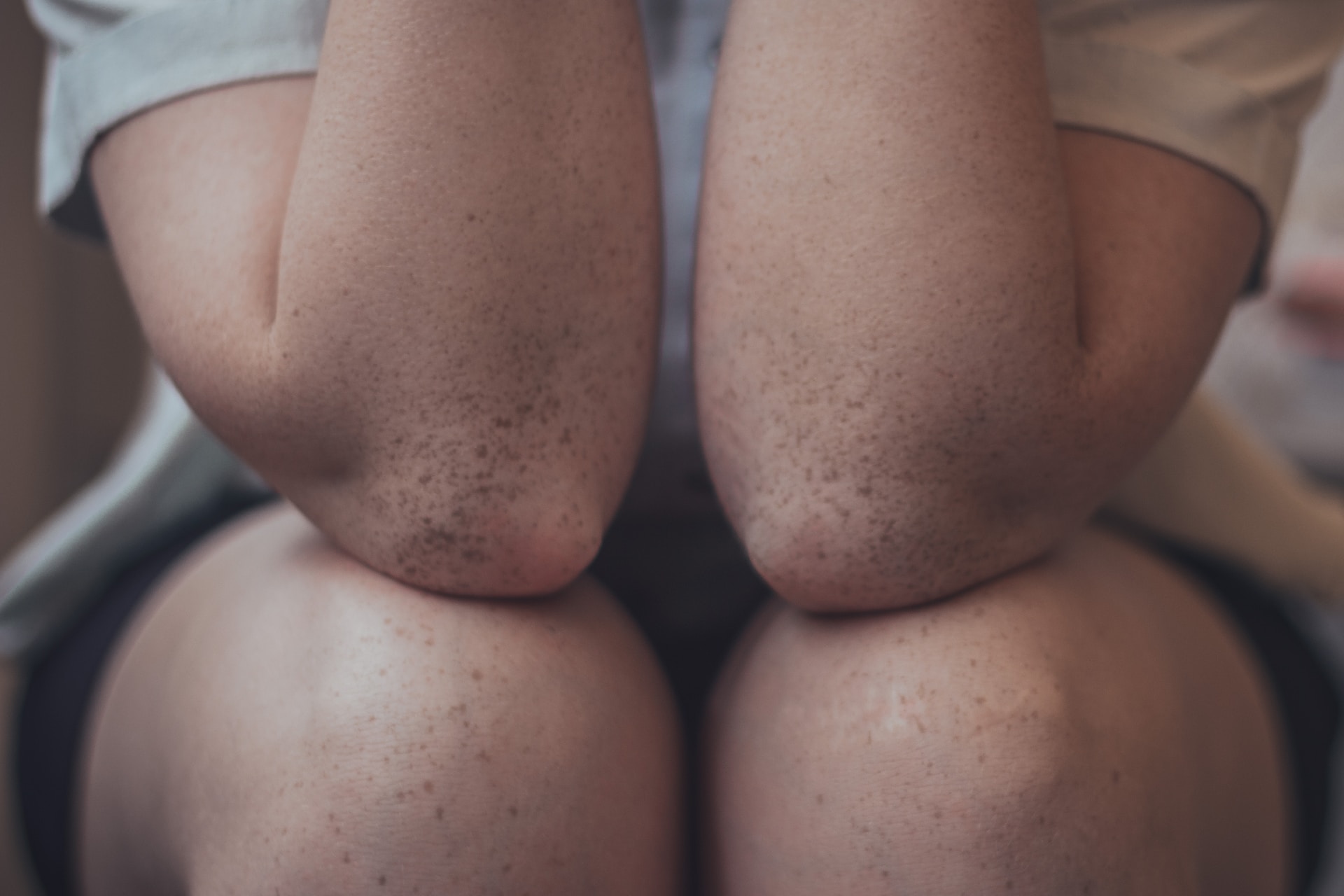
A dermatologist can most diagnose psoriasis at the first skin examination. However, because psoriasis can look like eczema and other skin diseases, analyzing it can sometimes be complex, and additional tests are required. The study can prevent wrong diagnoses. Most important, it makes sure serious health issues aren't overlooked. Sometimes, checking a tissue sample under a microscope is necessary for a patient.
Skin biopsy – Skin doctors often do a simple biopsy![]() to gather a tissue snippet. This happens at the doctor's office using a minor numbing agent. The sample is then checked through a microscope. With psoriasis, the skin cells are thick and packed tightly, differing from eczema and other skin conditions. Normally, it takes around a week to receive the skin biopsy findings. Once they're in, basic treatment can kick off to ease pain and unease.
to gather a tissue snippet. This happens at the doctor's office using a minor numbing agent. The sample is then checked through a microscope. With psoriasis, the skin cells are thick and packed tightly, differing from eczema and other skin conditions. Normally, it takes around a week to receive the skin biopsy findings. Once they're in, basic treatment can kick off to ease pain and unease.
Dermatoscopic examination – It is a noninvasive examination that involves viewing skin lesions with a particular device, under magnification, and with illumination, allowing the deeper structures of the lesion being evaluated to become visible. In diagnosing inverse psoriasis, dermatoscopic examination, which visualizes a pattern of uniformly arranged blood vessels in the form of red dots located on an erythematous base, is beneficial.
Blood morphology – Blood laboratory test results in patients with psoriasis are generally expected. However, older patients with metabolic disorders are quite often found to have elevated glucose levels, elevated total cholesterol and LDL fractions, lower HDL fractions, and high triglycerides.
Once psoriasis is diagnosed, a doctor may want to classify the severity of the condition so that response to treatment can be monitored. The method is often done for research purposes but can be used in people with severe or refractory psoriasis.
Psoriasis cannot be cured completely and permanently. Relapses of the disease are the rule. Therapy can aid in reducing signs of the condition. It's feasible to halt lesion progression, extend periods of remission, stop complications before they worsen into an extreme form, and rejuvenate one's energy. The foundation of surface-level therapy starts with scale elimination.
The following steps focus on curbing abnormal skin cell growth and inflammation. General treatment is implemented when local treatment is unsuccessful, and the course of the disease burdens the patient psychologically to the extent that daily functioning is impossible. Pustular psoriasis, psoriatic arthritis, and psoriatic erythroderma are also indications. Methods and drugs used in the treatment of psoriasis are:

Pharmacotherapy – The treatment of psoriasis uses various medications to relieve symptoms. These include glucocorticosteroids![]() , which have potent anti-inflammatory, antiproliferative, and immunomodulatory properties. Vitamin D3 analogs
, which have potent anti-inflammatory, antiproliferative, and immunomodulatory properties. Vitamin D3 analogs![]() are also used. In more severe conditions, m**********e, the most commonly used cytostatic drug in psoriasis, is used, as well as cyclosporin A, a potent immunosuppressant effective in all forms of psoriasis. Still, due to its nephrotoxicity, it is indicated mainly in cases of psoriasis that are particularly extensive and refractory to other treatments.
are also used. In more severe conditions, m**********e, the most commonly used cytostatic drug in psoriasis, is used, as well as cyclosporin A, a potent immunosuppressant effective in all forms of psoriasis. Still, due to its nephrotoxicity, it is indicated mainly in cases of psoriasis that are particularly extensive and refractory to other treatments.
Ointments – Anyone affected by psoriasis should consider the use of topical creams. Creams containing salicylic acid, renowned for its peeling effect and speed up healing from pimples and irritation, are beneficial. An effective psoriasis cream often includes urea, salicylic acid, and moisturizers which hydrate and smoothen the skin, helping to relieve itchiness and redness. Preparations like c*******n are suitable too. These can be dabbed onto the affected areas.
Injections – Biological drugs![]() are also used in the treatment of psoriasis. These are preparations that act on specific cytokines that are involved in the immunopathogenesis of psoriasis. They are administered by injection, subcutaneously, or intravenously. These agents have a systemic effect. Injectable drugs are effective, but for many patients, the method of administration needs to be revised.
are also used in the treatment of psoriasis. These are preparations that act on specific cytokines that are involved in the immunopathogenesis of psoriasis. They are administered by injection, subcutaneously, or intravenously. These agents have a systemic effect. Injectable drugs are effective, but for many patients, the method of administration needs to be revised.
Phototherapy – This treatment method involves exposure to ultraviolet light![]() produced by unique lamps. A therapeutic procedure is carried out through the use of light. There are some contraindications to phototherapy. These include taking medications that cause a strong hypersensitivity reaction to light eye diseases like glaucoma and retinal and lens problems. Phototherapy has shown high efficacy in treating psoriasis and is a safe and relatively side-effect-free therapy.
produced by unique lamps. A therapeutic procedure is carried out through the use of light. There are some contraindications to phototherapy. These include taking medications that cause a strong hypersensitivity reaction to light eye diseases like glaucoma and retinal and lens problems. Phototherapy has shown high efficacy in treating psoriasis and is a safe and relatively side-effect-free therapy.
Photochemotherapy – This is UVA irradiation after administration of psolaren, a light-sensitizing drug. For conditions like psoriasis or atopic dermatitis, following light treatment, skin issues are often cleared up for a longer time than with other treatments. Other illnesses might get completely cured. A key rule of light therapy is the personal dose choice for each person. Photochemotherapy is one of the most modern and safest methods of treating chronic skin diseases for the patient.
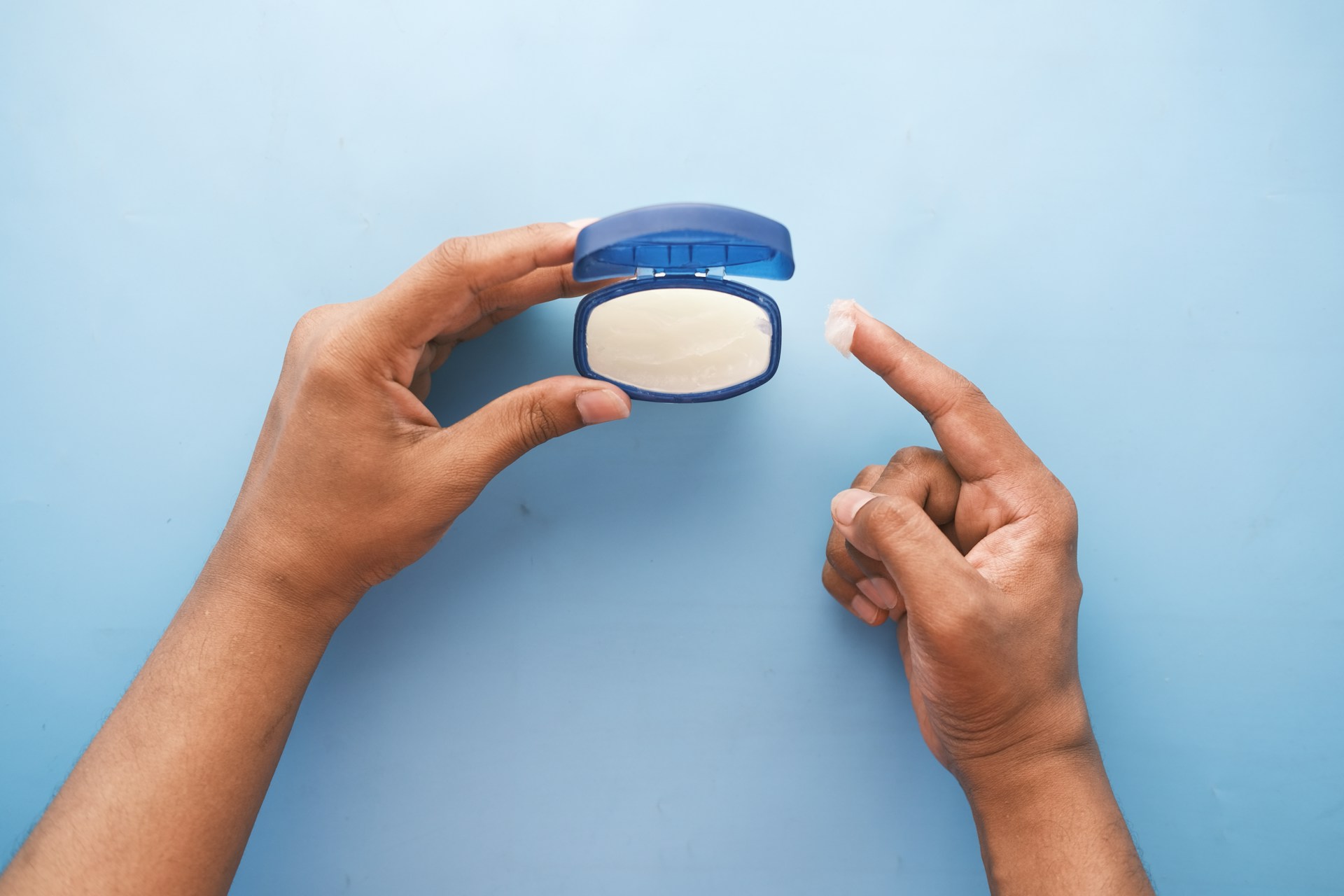
Psoriasis patients have a higher risk of various diseases associated with generalized inflammation than the general population. These include:

Diabetes – Psoriasis links with a higher chance of getting type 2 diabetes![]() . Diabetes refers to some metabolic illnesses. These illnesses show signs of resistance to insulin, insufficient insulin, and high sugar levels in the blood. To manage this, medications are used to lower insulin resistance. Lifestyle, especially diet, has a strong connection to diabetes. Therefore, a diabetic diet is one of the necessary components of treatment.
. Diabetes refers to some metabolic illnesses. These illnesses show signs of resistance to insulin, insufficient insulin, and high sugar levels in the blood. To manage this, medications are used to lower insulin resistance. Lifestyle, especially diet, has a strong connection to diabetes. Therefore, a diabetic diet is one of the necessary components of treatment.
Hypertension – Psoriasis has also been shown to have an independent correlation with high blood pressure![]() . Hypertension is one of the cardiovascular diseases. Elevated systolic and diastolic blood pressure values characterize it. Patients often do not realize that they suffer from this condition. Constant and abnormal pressure parameters require drug treatment. High blood pressure, even if it does not cause temporary discomfort, causes progressive changes in the vascular system, kidneys, heart, and organs of vision. The result of these changes can be a heart attack, stroke, heart failure, and many other severe conditions.
. Hypertension is one of the cardiovascular diseases. Elevated systolic and diastolic blood pressure values characterize it. Patients often do not realize that they suffer from this condition. Constant and abnormal pressure parameters require drug treatment. High blood pressure, even if it does not cause temporary discomfort, causes progressive changes in the vascular system, kidneys, heart, and organs of vision. The result of these changes can be a heart attack, stroke, heart failure, and many other severe conditions.
Atherosclerosis – Folks who experience psoriasis often have a hidden level of vascular atherosclerosis. This is linked to how much their heart vessels are hardened. Atherosclerosis is a heart condition. It results from plaque buildup within the inner linings of arteries, shrinking the channel and truly blocking the blood's path. The treatment mostly includes surgery, like taking out the hardened plaque. If not treated, atherosclerosis can make the chances of brain blood flow reduction and heart attack higher, and unfortunately, it can cause the patient's death.
Myocardial infarction – Chronic inflammation in psoriasis also increases the risk of cardiovascular disease. Several studies in psoriasis patients have shown higher mortality from cardiovascular causes, as well as a higher incidence of myocardial infarction. Myocardial infarction is usually a consequence of progressive ischemic heart disease. The condition is caused because of sudden blood flow reduction through the coronary arteries, the vessels responsible for blood flow to the heart muscle.
Stroke – Psoriasis increases the risk of stroke by up to three times. People with psoriasis are up to three times more likely to suffer a stroke. Stroke is a disease entity that is an immediate life-threatening condition. In a stroke situation, blood can't reach the brain properly. This leads to some brain parts dying. Different parts of the brain getting damaged can cause different symptoms. The first thing to do when someone has a stroke is to make sure they're stable.
Depression – Through the unsightly appearance of psoriatic lesions and the nuisance of the ailment, psoriasis reduces patients' quality of life. It negatively affects interpersonal relationships, thereby increasing the risk of depression. Depression is one of the most common mental disorders. Depression is an illness manifested by a lowered mood and an inability to enjoy life and things that were previously a source of pleasure. Episodes of depression can vary in severity. In mild and mild-moderate cases, depressive symptoms can make it difficult, but not impossible, to perform duties and social roles. Severe depression, on the other hand, can make everyday activities virtually impossible.
Proper diagnosis of psoriasis is essential to be able to introduce effective treatment. Therefore, knowing skin diseases that can give similar symptoms to psoriasis is useful. Such diseases include:
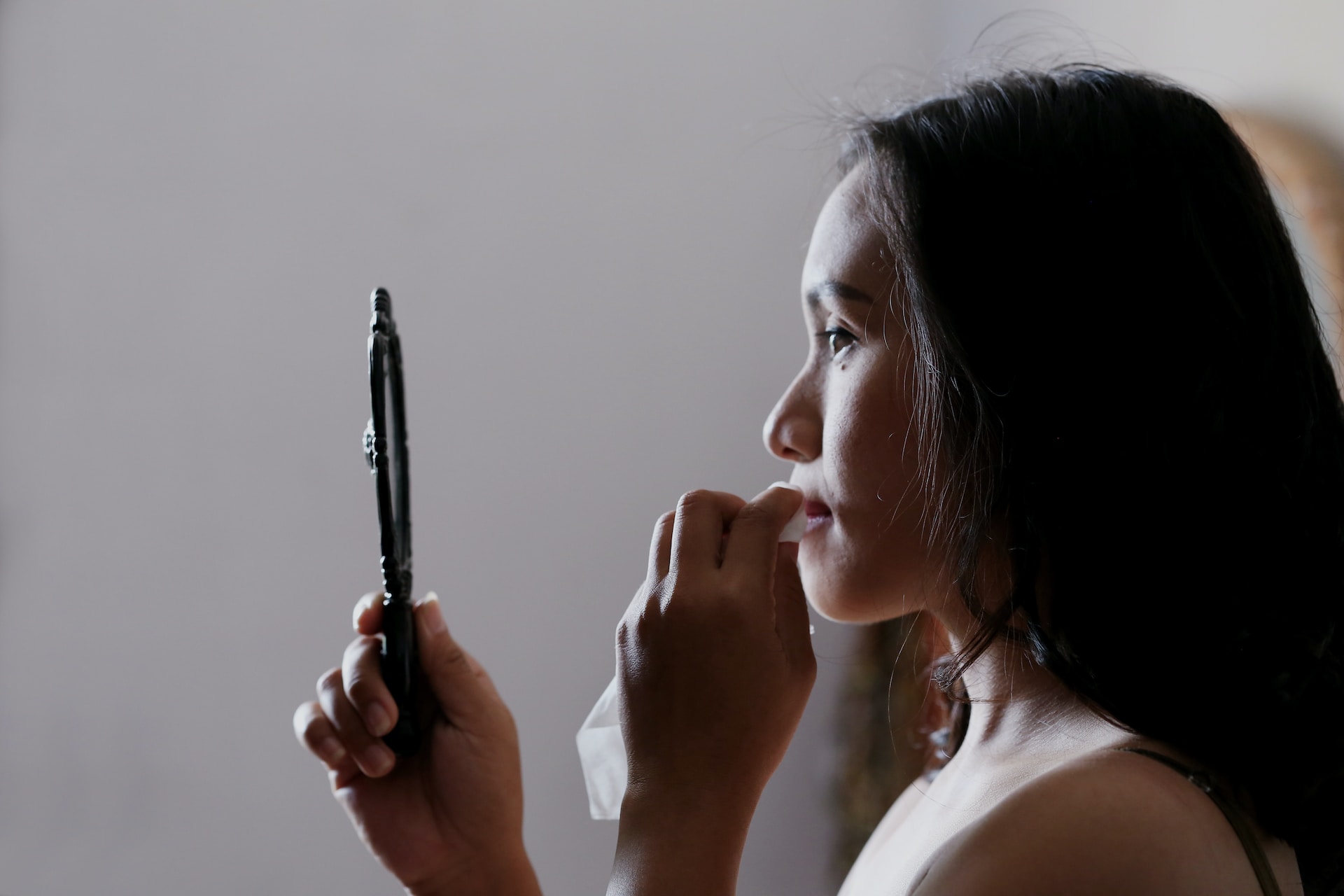
Atopic dermatitis most often appears as early as infancy. In time, the sickness signs may fade naturally or due to therapy. Frequently though, the illness is lingering and repetitive. This implies that the indications of the illness come back periodically or are always present but with differing levels of harshness.
At the beginning, skin damages in atopic dermatitis and psoriasis can seem alike. Itching sets apart atopic dermatitis and psoriasis. Mild itching is a psoriasis trait, but atopic dermatitis brings about severe itching. This can result in swelling, redness, and skin outbreaks. The itching often gets worse at night.
Eczema, simply put, is skin inflammation. This term covers a bunch of conditions that all lead to irritated skin layers. Despite the many causes of eczema, the symptoms stay pretty much the same. Differences pop up when we zoom in on a specific kind of eczema. How bad it is, how long it lasts, and if there will be complications depends on which eczema type is in play.
Individual diseases are also characterized by a variable predisposition to cause eczema in particular body parts. Psoriasis patients declare that they experience mild itching. At the same time, those struggling with eczema complain of persistent itching, which is the direct cause of swelling, redness, and even cracking of the skin.
Seborrheic dermatitis is a somewhat troublesome ailment that affects people of all ages, even infancy, but it most often affects adolescents during puberty. Seborrheic dermatitis is a chronic, recurrent skin disease. It is characterized by flaky skin on the face, hair, and other body areas. It appears due to inflammation of the skin and sebaceous glands, which causes excessive epidermis peeling. These lesions initially occur on the scalp. An erythematous and scaly appearance characterizes seborrheic lesions. Psoriatic lesions, on the other hand, are drier, thicker, lighter, and more pronounced.
Mycosis fungoides is often diagnosed on the feet, rarely on the hands. Instead, look for a variant of allergic eczema or psoriasis in this location. Dandruff is often diagnosed on the trunk as dandruff, a yeast dermatomycosis that can sometimes be confused with psoriasis. On the scalp, dandruff and other exfoliative dermatoses are rarely ringworm.
Most often, it is either seborrheic dermatitis or low-grade psoriasis. Dermatophytoses cause oval-shaped foci of alopecia. Psoriasis, on the other hand, also results in hair loss. Before treatment, we must determine what kind of disease we deal with. Confirmatory or exclusionary tests are, in the case of ringworm, a mycological examination, and in psoriasis, a diagnostic biopsy.
Nail fungus is a disease that is very easy to contract. The primary sources of infection are swimming pools, baths, and saunas, but you can also get infected from family members. The disease affects toenails much more often than hands. The first symptoms of onychomycosis are difficult to notice because you should look for them only at the edges of the nail.
Over time, however, the disease takes over the entire plate, which has an unnatural color. The disturbing appearance of the nails does not always have to mean a fungal infection. In some people, thickening on the nails, a change in their color, and spots appearing on them are symptoms of psoriasis.
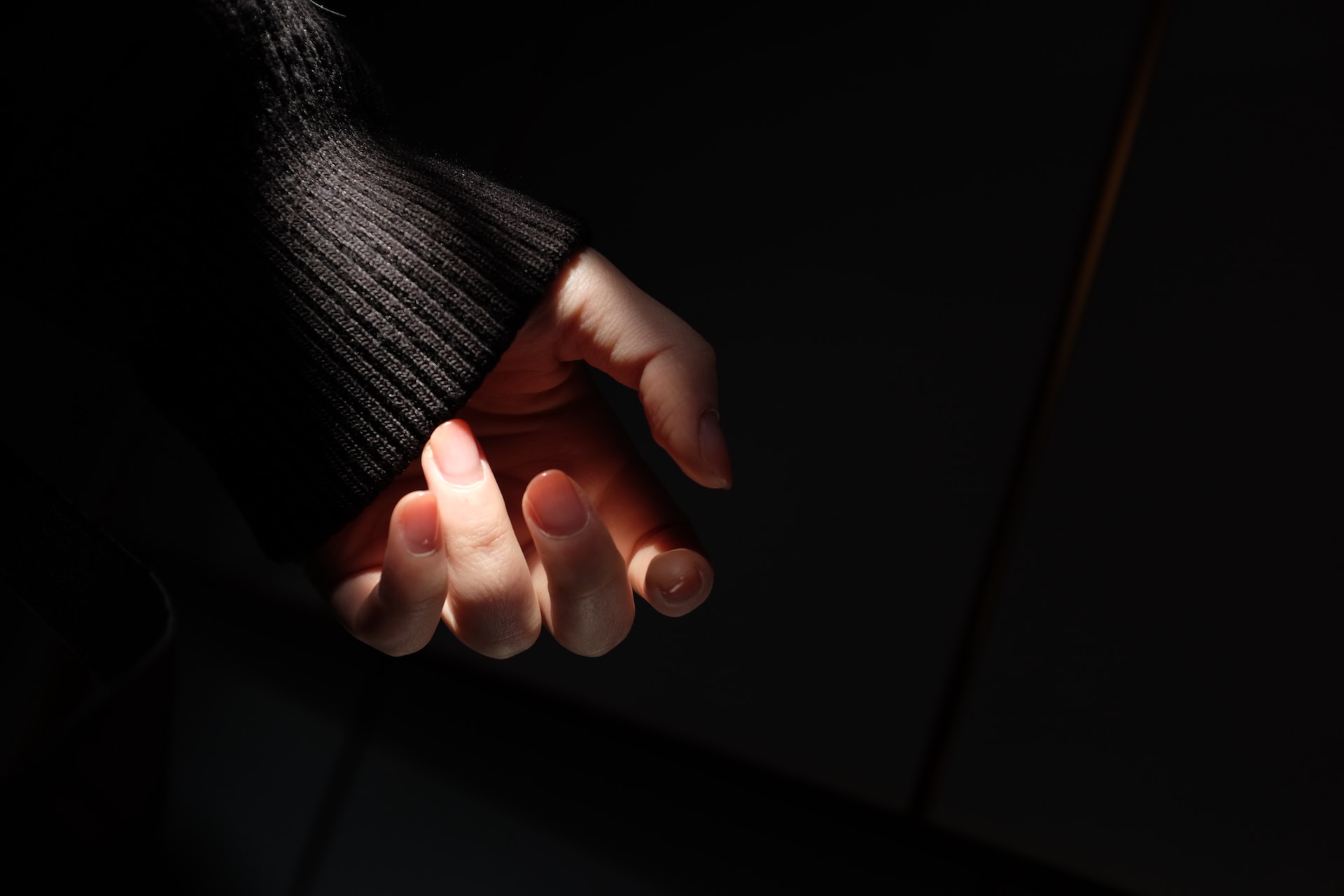
Lupus attacks the immune system, causing it to react abnormally. Lupus erythematosus is a severe disease that can look different in each case. Redness in the face, aching in the joints, bad headaches, and issues with blood – these are some signs. Lupus can first appear worse in kids than in grown-ups.
The illness also may hit kids harder and can be more deadly. This body-attacking sickness slowly shows up in adults. This makes it harder and takes longer to diagnose properly. Butterfly-shaped erythema is the most characteristic symptom in lupus erythematosus patients. Photos of patients clearly show the erythema on the cheeks and back of the nose. On this basis, the disease can be distinguished from psoriasis.
Psoriatic arthritis, like rheumatoid arthritis, is an autoimmune disease. Several general symptoms accompany both joint diseases. Such complaints as elevated body temperature, fatigue, decreased appetite, and, thus, weight can be observed. The most common complaints are redness, tenderness and swelling, pain, and joint stiffness in the communal area. Both rheumatoid arthritis and psoriatic arthritis are inflammatory diseases of a chronic nature.
However, in the latter, no rheumatoid factor appears in the blood. It should be further emphasized that psoriatic arthritis is a condition that has an impact on the vast majority, though not always, of people diagnosed with psoriasis and manifesting psoriatic lesions on the nail plate or skin. This feature distinguishes psoriatic arthritis from rheumatoid arthritis. Therefore, a psoriasis test can help make the diagnosis.
No home remedies can replace the treatment of advanced psoriasis. However, they can alleviate its symptoms and support therapy with other methods. In addition to drug treatment, skin care with psoriasis and a proper diet play an important role.
It is recommended to use emollients and preparations with a keratolytic effect![]() , exfoliating excessively keratinized epidermis. Various preparations with healing and soothing effects are recommended. Use cosmetics designed for skin with psoriatic lesions and use emollients regularly. If you have psoriasis, steer clear of extended, boiling baths – they can make things worse.
, exfoliating excessively keratinized epidermis. Various preparations with healing and soothing effects are recommended. Use cosmetics designed for skin with psoriatic lesions and use emollients regularly. If you have psoriasis, steer clear of extended, boiling baths – they can make things worse.
Rough scrubbers are a no-go, as they might hurt your skin and start new spots. Remember to rinse off completely after you've bathed. Using a gentle towel, pat dry instead of rub. Brush your hair with a natural bristle brush. Using a plastic one could harm the scalp. Avoid using curling irons and dry hair using low heat.
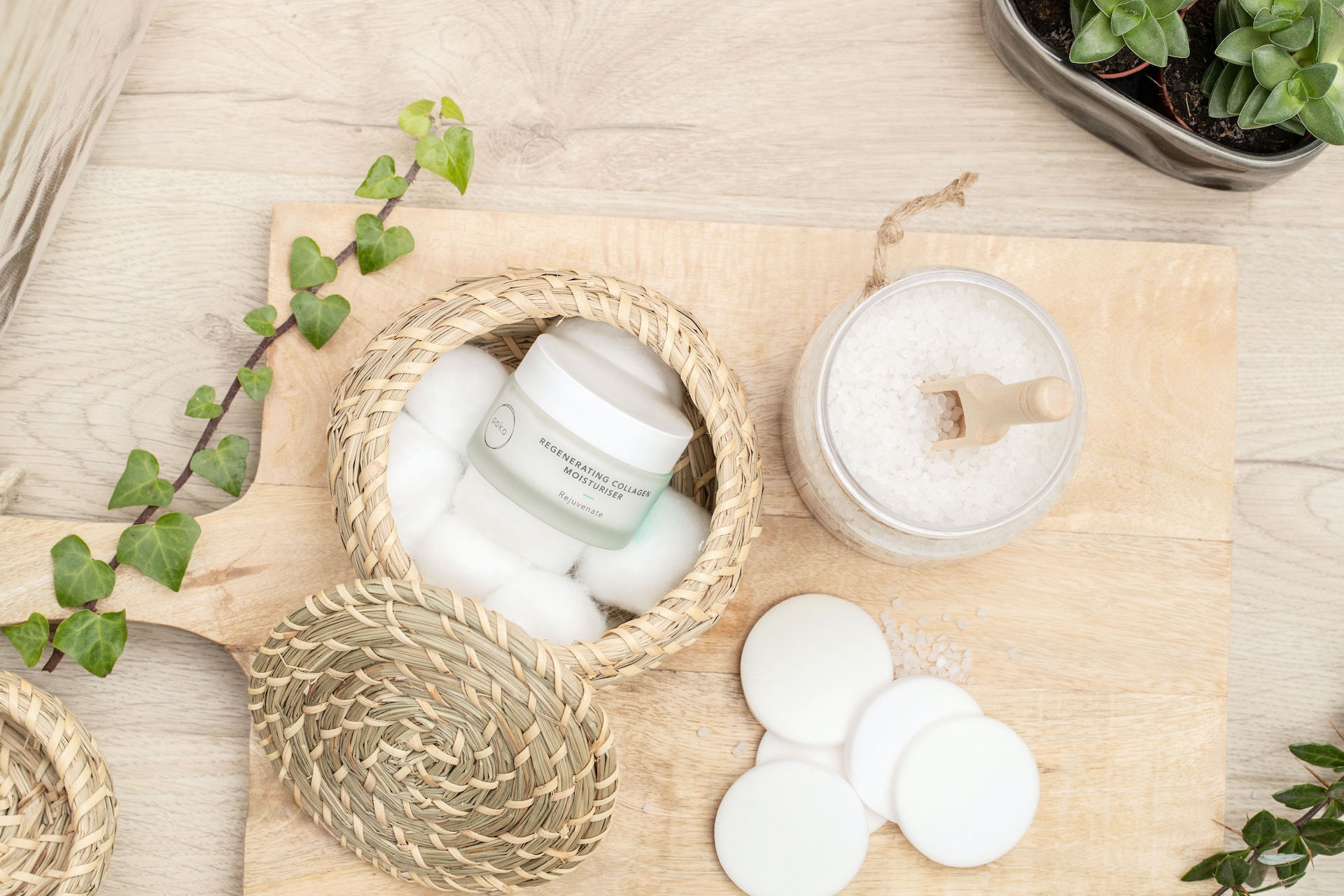
Complementing proper skin care with psoriasis is an appropriate diet. Studies show symptom relief and overall skin improvement in psoriasis patients can be observed in a group supplementing omega-3 fatty acids![]() , vitamin D3, selenium, coenzyme Q10, or probiotics. You should cut down on things like saturated fats, red meats, straightforward sugars, and booze.
, vitamin D3, selenium, coenzyme Q10, or probiotics. You should cut down on things like saturated fats, red meats, straightforward sugars, and booze.
People with psoriasis ought to have lots of greasy fish, flaxseed oil, nuts, and fresh produce in their meals. An unhealthy diet along with an unhealthy lifestyle can increase inflammatory processes in the body, which worsens the course of the disease, reduces the effectiveness of treatment, and accelerates the development of cardiovascular complications.

Psoriasis is not an infectious disease. It is one of the most common skin diseases. The first symptoms are usually noticed in people aged 15-40 years. The causes of the onset are not fully explained, although they are related to genetic, immunological, and environmental factors. Psoriasis shows up as excessively hardened bumps or marks on the skin.
The regular spots for these bumps are elbows, knees, scalp, and the lower back. Sometimes, though rarely, these marks can cover the entire skin. The go-to treatment includes ointments for psoriasis. If lotions are not giving enough relief, we use treatment that impacts the whole body. Taking care of your body with skin-friendly products and good food is key.
People with psoriasis are more likely to suffer from issues like heart disease and metabolic disorders due to body-wide inflammation. This is more than people without the condition. This health problem can majorly affect their life quality. It can hurt how they function day-to-day and interact with others, raising the chance of depression.